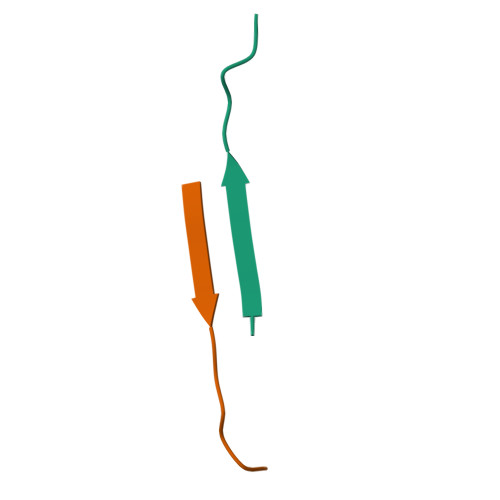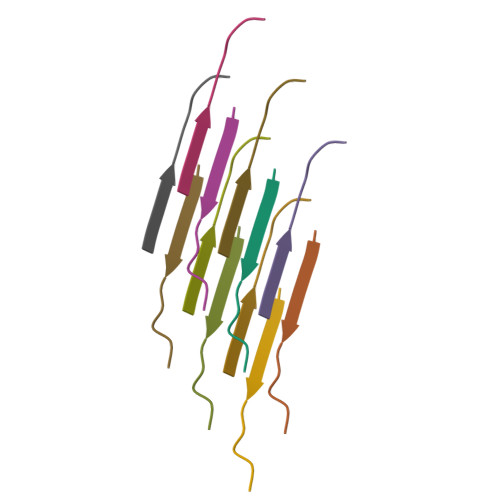Structure based inhibitors of Amyloid Beta core suggest a common interface with Tau.
Griner, S.L., Seidler, P., Bowler, J., Murray, K.A., Yang, T.P., Sahay, S., Sawaya, M.R., Cascio, D., Rodriguez, J.A., Philipp, S., Sosna, J., Glabe, C.G., Gonen, T., Eisenberg, D.S.(2019) Elife 8
- PubMed: 31612856
- DOI: https://doi.org/10.7554/eLife.46924
- Primary Citation of Related Structures:
6O4J - PubMed Abstract:
Alzheimer's disease (AD) pathology is characterized by plaques of amyloid beta (Aβ) and neurofibrillary tangles of tau. Aβ aggregation is thought to occur at early stages of the disease, and ultimately gives way to the formation of tau tangles which track with cognitive decline in humans. Here, we report the crystal structure of an Aβ core segment determined by MicroED and in it, note characteristics of both fibrillar and oligomeric structure. Using this structure, we designed peptide-based inhibitors that reduce Aβ aggregation and toxicity of already-aggregated species. Unexpectedly, we also found that these inhibitors reduce the efficiency of Aβ-mediated tau aggregation, and moreover reduce aggregation and self-seeding of tau fibrils. The ability of these inhibitors to interfere with both Aβ and tau seeds suggests these fibrils share a common epitope, and supports the hypothesis that cross-seeding is one mechanism by which amyloid is linked to tau aggregation and could promote cognitive decline.
Organizational Affiliation:
UCLA-DOE Institute, Department of Biological Chemistry, Molecular Biology Institute, Howard Hughes Medical Institute, University of California, Los Angeles, Los Angeles, United States.


















